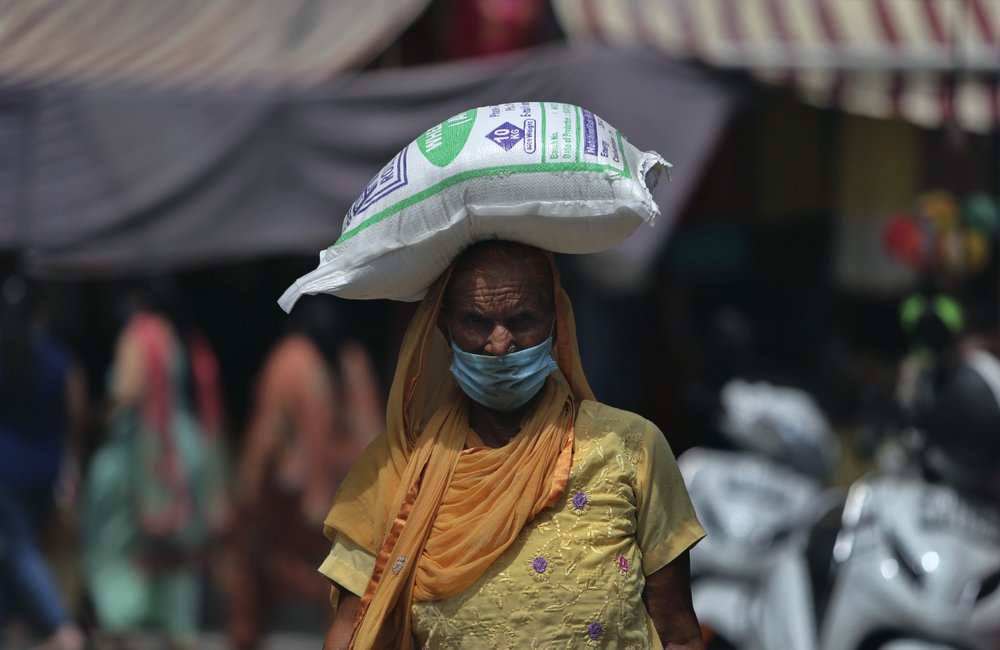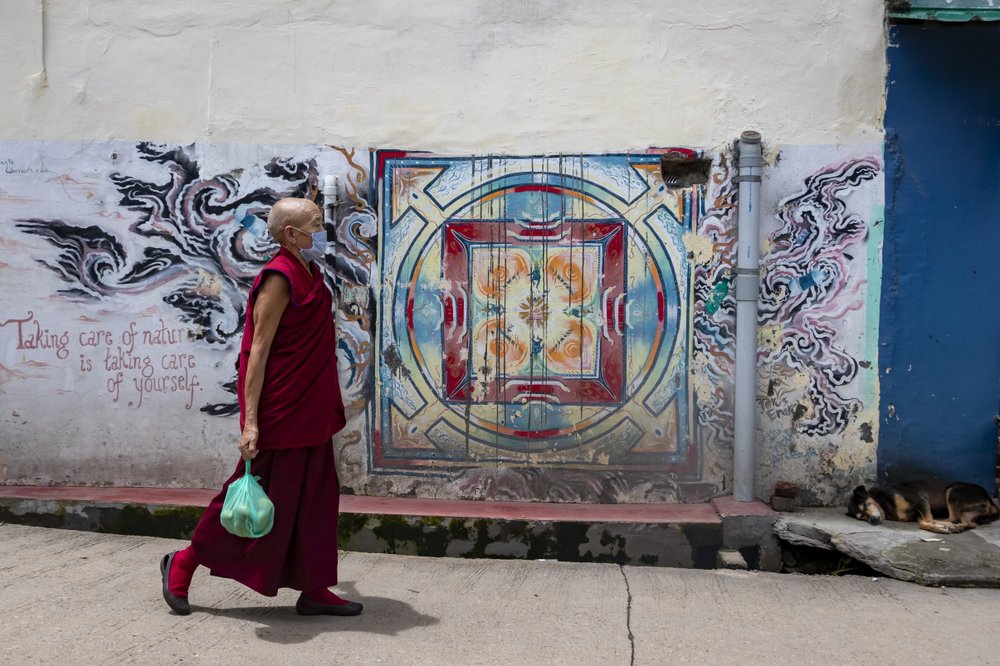
Health workers take blood samples for a random serological test to check for antibodies against the coronavirus in New Delhi, India, August 6, 2020. /AP
Health workers take blood samples for a random serological test to check for antibodies against the coronavirus in New Delhi, India, August 6, 2020. /AP
As India hit another grim milestone in the coronavirus pandemic on Friday, crossing 2 million cases and more than 41,000 deaths, community health volunteers went on strike complaining they were ill-equipped to respond to the wave of infection in rural areas.
Even as India has maintained comparatively low mortality rates, the disease trajectory varies widely across the country with the burden shifting from cities with relatively robust health systems to rural areas, where resources are scarce or nonexistent.
India has been the third nation to pass that unwanted milestone, lagging behind only the United States and Brazil.
With infections spreading further to smaller towns and rural areas, experts say the epidemic in India is likely to be months away from hitting its peak, putting more strain on an already overburdened healthcare system.
"A country of India’s size and diversity has multiple epidemics in different phases," said Rajib Dasgupta, head of the Centre of Social Medicine and Community Health at the Jawaharlal Nehru University in New Delhi.
The health ministry said on Friday there were 62,538 new infections, taking the country's total to 2.03 million.
Still, the government has taken some solace from the relatively low death rate, at about 2 percent, but experts say its testing rate at 16,035 per million people is far too low.

An Indian woman wearing face mask as a precaution against the coronavirus walks carrying a bag of flour on her head in Jammu, India, August 6, 2020. /AP
An Indian woman wearing face mask as a precaution against the coronavirus walks carrying a bag of flour on her head in Jammu, India, August 6, 2020. /AP
Life cautiously returned to the streets of the capital of New Delhi and financial hub Mumbai, which appear to have passed their peaks.
But state and local governments elsewhere in India were reimposing lockdowns after sharp spikes in cases.
Around 900,000 members of an all-female community health force began a two-day strike on Friday, protesting that they were being roped in to help with contact tracing, personal hygiene drives and in quarantine centers, but weren’t given personal protective equipment or additional pay, according to organizer A.R. Sindhu.
The health workers, known as Accredited Social Health Activists, or ASHA, which means 'hope' in several Indian languages, have been deployed in each village on behalf of the Health Ministry. Their work ranges from escorting children to immunization clinics to counseling women on childbirth.

A nun wearing a mask as a precaution against the coronavirus walks past a wall painting with a saying 'Taking care of nature is taking care of yourself' in Dharmsala, India, August 6, 2020. /AP
A nun wearing a mask as a precaution against the coronavirus walks past a wall painting with a saying 'Taking care of nature is taking care of yourself' in Dharmsala, India, August 6, 2020. /AP
But while their regular work hasn't reduced, they are increasingly being involved by state governments in the fight against the pandemic, said Sindhu.
"But ASHA workers don’t have masks or PPEs or even sanitizers," she said.
She added that although the work has increased and become more dangerous, their salaries remain static at roughly 2,000 rupees (about 27 U.S. dollars) per month. And the families of at least a dozen women who she said died from the virus didn’t receive compensation from India's federal insurance for front-line health care workers because their deaths were not recorded as COVID-19 deaths.
Manisha Verma, a spokesperson for the Health Ministry, did not immediately respond to a request for comment.
In Mumbai, the capital of central Maharashtra state, cases had plateaued after months of steady growth. But rural parts were seeing an opposite trend.
Dr. S.P. Kalantri, the director of a hospital in the village of Sevagram in Maharashtra, about 74 kilometers from the city of Nagpur, said that younger people were cavalier about social distancing and masks. Fatigue and increased familiarity with the disease, which has been most fatal to Indians above the age of 60 with comorbidities, had resulted in people not being as vigilant, he said.
"Everyone thinks it won't be them," he said.
Like in much of the rest of the world, many Indians appeared to be counting on a therapeutic treatment or a vaccine to contain the spread of the disease.
India has launched two of the world’s dozen and a half prospective vaccines into human trials, with vaccine-maker Zydus Cadila announcing it had completed phase 1 trials of its DNA-based vaccine on Thursday.
The country will be vital to global vaccination efforts, regardless of whether its own attempts work. The world’s largest vaccine maker, the Serum Institute in the central city of Pune, has ramped up capacity to manufacture as many as a billion doses in development by AstraZeneca and the University of Oxford, which is in phase 2 trials in India and England, and phase 3 trials in Brazil and South Africa.
Researchers are hoping to launch the Oxford vaccine for emergency use by October.
(With input from agencies)